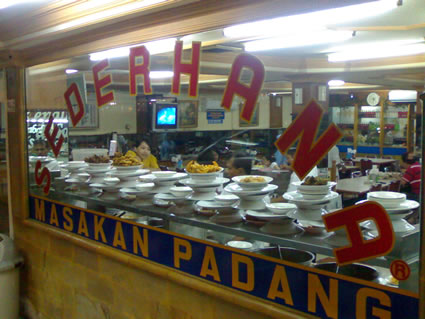10:34 AM
Posted by
My Indonesia
,
Welcome to Trunyan, one of the oldest villages n Bali.
It's easy to see why the people of Trunyan are so defensive of their territory. The view across Lake Batur beats any northern italian backdrop. The locals call their caldera's lake 'the sea': at more than 1,600 metres above the sea-level, small, windwhipped waves cut across the depply turquoise water. Opposite the over 1,000-year-old village, pistes of dark-grey lava from previous eruptions - the last in 2000 - drip down the slopes of the still-active Gunung Batur.
Like a handful of other villages scattered around the dark volcanic uplands, Trunyan is inhabited by the Bali Mula - the so-called 'original Balinese' people - a once isolationist, disparate ethnic group that makes up nearly 3 percent of the island's population. But the Bali Mula of Trunyan are finally beginning to feel a little too isolated. Many of Trunyan's elder residents cannot speak Bahasa Indonesia.
 Known as sate in Indonesian (and pronounced similar to the English), Indonesia is the home of satay, and satay is a widely renowned dish in almost all regions of Indonesia and is considered the national dish. Satays, in particular, are a staple in Indonesian cuisine, served everywhere from street carts to fine dining establishments, as well as in homes and at public gatherings. As a result, many variations have been developed throughout the Indonesian Archipelago. The satay variants in Indonesia usually named after the region its originated, the meats, parts or ingredients its uses, also might named after the process or method of cooking.
Known as sate in Indonesian (and pronounced similar to the English), Indonesia is the home of satay, and satay is a widely renowned dish in almost all regions of Indonesia and is considered the national dish. Satays, in particular, are a staple in Indonesian cuisine, served everywhere from street carts to fine dining establishments, as well as in homes and at public gatherings. As a result, many variations have been developed throughout the Indonesian Archipelago. The satay variants in Indonesia usually named after the region its originated, the meats, parts or ingredients its uses, also might named after the process or method of cooking. RSS Feed
RSS Feed
 Twitter
Twitter








 Indonesian Rupiah Converter
Indonesian Rupiah Converter